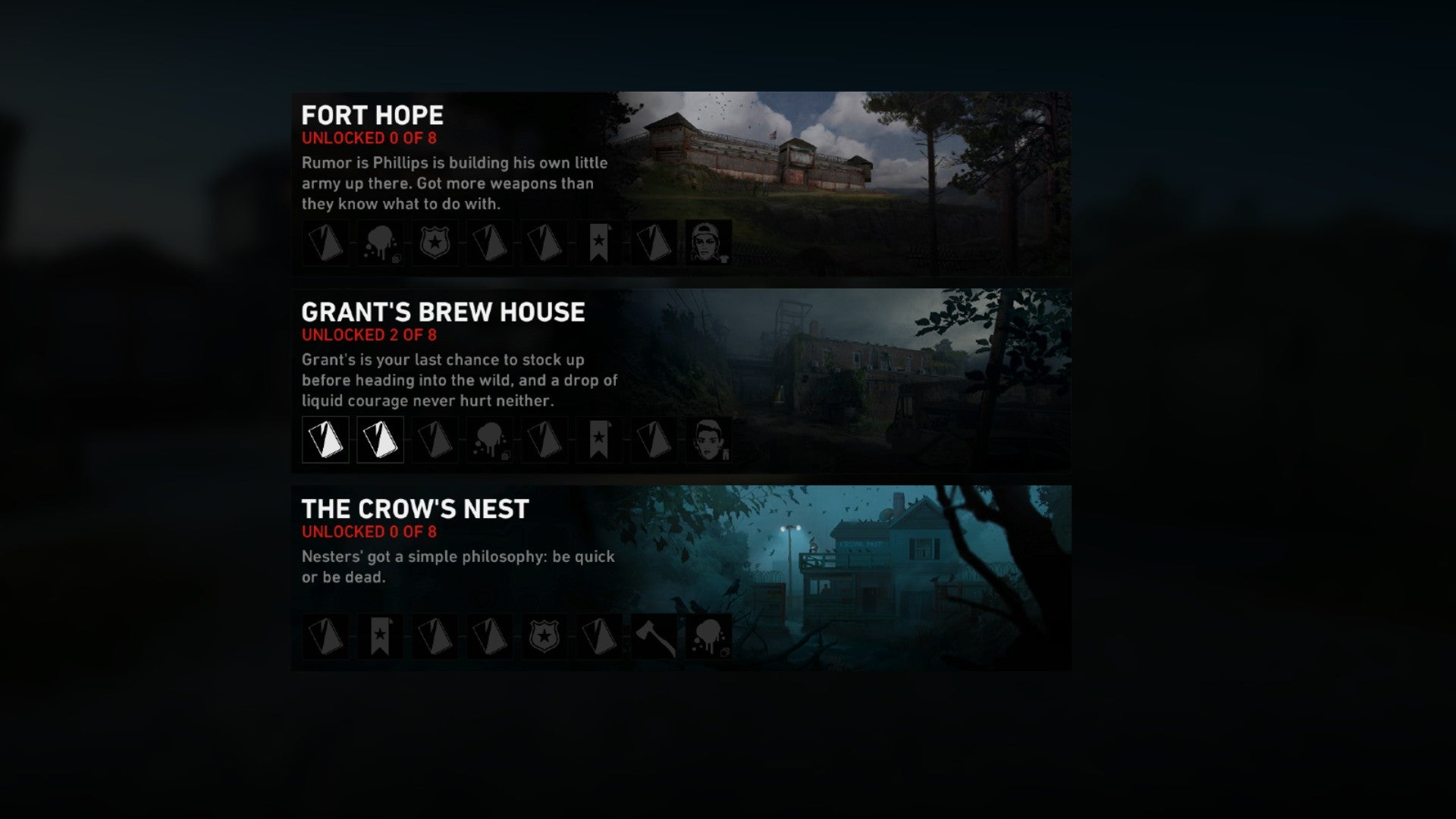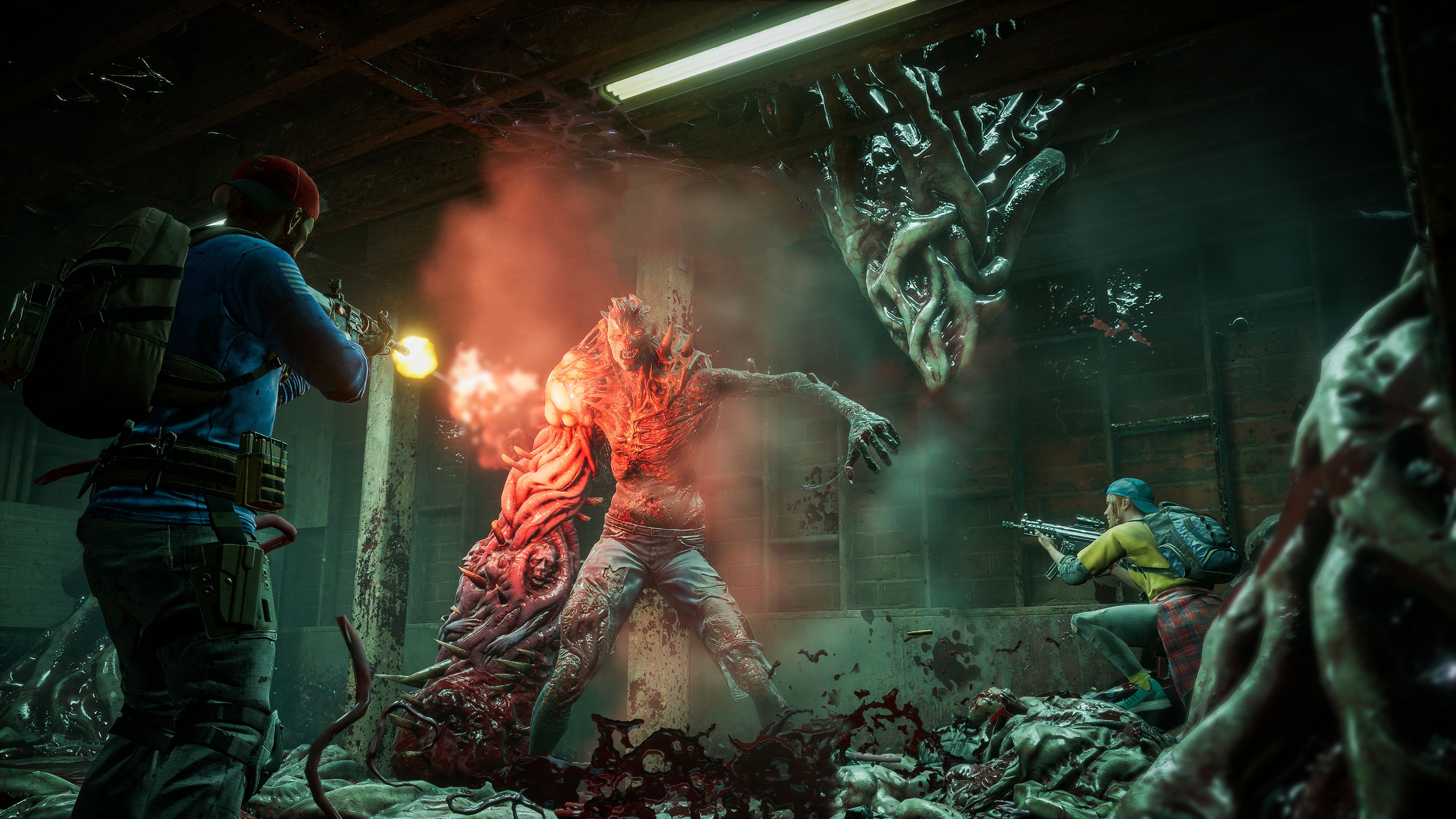On this page:
How do Back 4 Blood Supply Lines work? How many Supply Lines are there in Back 4 Blood? How to build a deck in Back 4 Blood Back 4 Blood card system explained
How do Back 4 Blood Supply Lines work?
You start Back 4 Blood with a preset deck containing some basic cards. To unlock more cards, you will need to progress your Supply Lines. Supply Lines are sort of like a Battle Pass; you earn progress through a set track of rewards through gameplay. Right now, there are really no secrets to this. You earn Supply Points for finishing campaign levels, so get out there and play the game to progress. Then, interact with one of the two NPCs marked on your HUD in Fort Hope to spend your Supply Points. At the start, every player will work through a single Supply Line that includes some cosmetics and a few basic cards. After that, you are presented with three different Supply Lines you can progress individually. Starting a new Supply Line doesn’t commit you to it, either. You can unlock the first two cards in Paul’s Alley, go out and earn more Supply Points, then spend those on the first card in The Crow’s Nest, for example.
How many Supply Lines are there in Back 4 Blood?
In total, there are 49 Supply Lines that you can complete. The first is essentially a tutorial that you need to finish before unlocking access to the rest. As mentioned above, you will always have a selection of three Supply lines to choose from. This is because there are three different sets of Supply Lines. When you complete a Supply line, you will unlock the next one from its set. There are 16 Supply Lines in each set, so there’s plenty to unlock.
How to build a deck in Back 4 Blood
The Card system starts in the Fort Hope lobby area with deck building. You can access the deck builder through the same two NPCs mentioned above. You start with a preset deck and can build new ones with the cards you unlock via Supply Lines. Each deck contains a maximum of 15 cards. No duplicates are allowed either, so you can’t stack a card like Cross Trainers to become incredibly fast. Some cards have independently powerful bonuses, like Breakout, which allows you to break free from grabs on a cooldown. Others work synergistically. For example, you can combine Energy Bar, which increases stamina regeneration, with Run and Gun, which lets you shoot while sprinting, to enable a more, well, run and gun playstyle (which is very important for our Evangelo build). Play around with different combinations to find a deck that fits you by improving your best weapons and stats. One important thing: the top card on your deck will automatically be active for the entire campaign. Make sure to put a powerful card at the top to maximize your efficiency. For example, our Holly build puts Adrenaline Fuelled at the top, whilst our Walker build gives Two Is One And One Is None the top spot, because those are the most important cards for each character. For more useful bits of advice, check out our Back 4 Blood tips and tricks guide!
Back 4 Blood card system explained
Back 4 Blood features two kinds of cards that work in opposition to modify your campaign experience. At the start of each campaign level, the AI Director draws two Corruption Cards. After that, players will draw and select cards from their decks.
Corruption Cards
Corruption cards are random modifiers that unpredictably alter your campaign. These include challenges that reward players with bonuses on completion. For example, the Speedrun card challenges players to complete a level within a time limit and rewards extra Copper for the next safehouse if they succeed. In addition to the challenges, Corruption Cards include dangerous modifiers that unpredictably alter the difficulty of the campaign. Modifiers range from simple weather changes, like the Mist card, to specific bonuses for Ridden, like the Armored Bruisers card. You need to pay close attention to the Corruption Cards active on each level so that you aren’t caught off guard.
Drawing and using player cards
After Corruption Cards are drawn, each player will draw five cards from their deck. You must choose one out of the five to activate for the rest of the campaign. The rest are shuffled back into your deck. Because your cards remain active for the duration of the campaign, you have a lot of opportunities to build synergies as you go. Back 4 Blood’s campaign grows ever more difficult as you progress, so boosting your power as you push forward is key. If you can’t beat the much more difficult second half of the campaign on your first go don’t fret. You can spend those Supply Points, unlock new cards, and build a better deck for the next run. It’s a neat little roguelike-inspired system that shakes up the gameplay a lot. That’s everything you need to know about using Supply Lines and building decks in Back 4 Blood. If you’re finding Nightmare difficulty particularly hard, check out our guide on all of the Special Ridden to learn their weaknesses. If you need the right character to go with your card and take on Nightmare difficulty, check out our guide to the best characters in Back 4 Blood (but remember to learn how to unlock all of the cleaners first).

